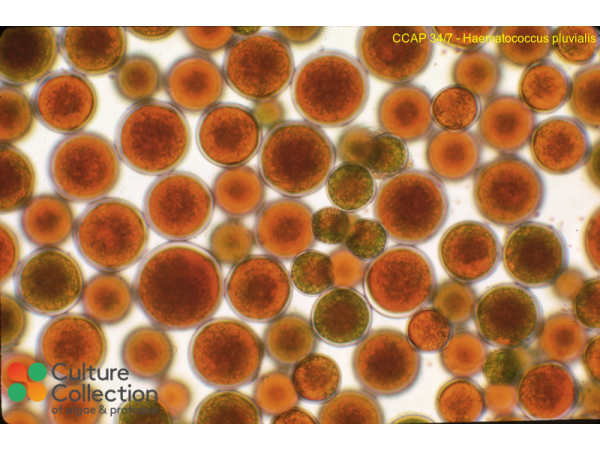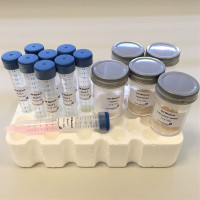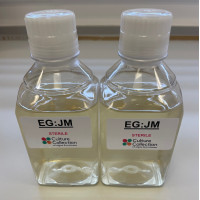References [ 23 ]
González MA, Cifuentes AS & Gómez PI (2009) Growth and total carotenoid content in four Chilean strains of Haematococcus pluvialis Flowtow, under laboratory conditions. Gayana Botánica 66: 58-70.
DOI: none
Cifuentes AS, González MA, Vargas S, Hoeneisen M & González N (2003) Optimization of biomass, total carotenoids and astaxanthin production in Haematococcus pluvialis Flowtow strain Steptoe (Nevada, USA) under laboratory conditions. Biological Research 36: 343-357.
DOI: none
Domínguez A, Ferreira M, Coutinho P, Fábregas J & Otero A (2005) Delivery of astaxanthin from Haematococcus pluvialis to the aquaculture food chain. Aquaculture 250: 424-430.
Orosa M, Franqueira D, Cid A & Abalde J (2005) Analysis and enhancement of astaxanthin accumulation in Haematococcus pluvialis. Bioresource Technology 96: 373-378.
Noroozi M, Omar H, Napis S, Hejazi MA & Tan SG (2012) Comparative biodiversity and effect of different media on growth and astaxanthin content of nine geographical strains of Haematococcus pluvialis. African Journal of Biotechnology 11: 15049-15059.
Gutierrez CL, Gimpel J, Escobar C, Marshall SH & Henriquez V (2012) Chloroplast genetic tool for the green microalgae Haematococcus pluvialis (Chlorophyceae, Volvocales). Journal of Phycology 48: 976-983.
Zhang W, Wang J, Wang J & Liu T (2014) Attached cultivation of Haematococcus pluvialis for astaxanthin production. Bioresource Technology 158: 329-335.
Cannell RJP, Kellam SJ, Owsianka AM & Walker JM (1987) Microalgae and cyanobacteria as a source of glycosidase inhibitors. Journal of General Microbiology 133: 1701-1705.
Kim DY, Vijayan D, Praveenkumar R, Han JI, Lee K, Park JY, Chang WS, Lee JS & Oh YK (2016) Cell-wall disruption and lipid/astaxanthin extraction from microalgae: Chlorella and Haematococcus Bioresource Technology 199: 300-310.
Allewaert CC, Vanormelingen P, Pröschold T, Gómez PI, González MA, Bilcke G, D'Hondt S & Vyverman W (2015) Species diversity in European Haematococcus pluvialis (Chlorophyceae, Volvocales). Phycologia 54: 583-598.
Allewaert CC, Vanormelingen P, Daveloose I, Verstraete T & Vyverman W (2017) Intraspecific trait variation affecting astaxanthin productivity in two Haematococcus (Chlorophyceae) species Algal Research 21: 191-202.
Serive B, Nicolau E, Bérard JB, Kaas R, Pasquet V, Picot L & Cadoret JP (2017) Community analysis of pigment patterns from 37 microalgae strains reveals new carotenoids and porphyrins characteristic of distinct strains and taxonomic groups. PLoS ONE : e0171872.
Aydin S, Yildirim E, Ince O & Ince B (2017) Rumen anaerobic fungi create new opportunities for enhanced methane production from microalgae biomass. Algal Research 23: 150-160.
MeGraw VE, Brown AR, Boothman C, Goodacre R, Morris K, Sigee D, Anderson L & Lloyd JR (2018) A novel adaptation mechanism underpinning algal colonization of a nuclear fuel storage pond. mBio 9: e02395-17.
Allewaert CC, Hiegle N, Strittmatter M, de Blok R, Guerra T, Gachon CMM & Vyverman W (2018) Life history determinants of the susceptibility of the blood alga Haematococcus to infection by Paraphysoderma sedebokerense (Blastocladiomycota) Algal Research 31: 282-290.
Lee KY, Lee SH, Lee JE & Lee SY (2019) Biosorption of radioactive cesium from contaminated water by microalgae Haematococcus pluvialis and Chlorella vulgaris Journal of Environmental Management 233: 83-88.
Khoo KS, Lee SY, Ooi CW, Fu X, Miao X, Ling TC & Show PL (2019) Recent advances in biorefinery of astaxanthin from Haematococcus pluvialis. Bioresource Technology 288: 121606.
Galarza JI, Arredongdo Vega BO, Villón J & Henríquez V (2019) Deesterification of astaxanthin and intermediate esters from Haematococcus pluvialis subjected to stress Biotechnology Reports 23: e00351.
Landels A, Beacham TA, Evans CT, Carnovale G, Raikova S, Cole IS, Goddard P, Chuck C & Allen MJ (2019) Improving electrocoagulation floatation for harvesting microalgae Algal Research 39: 101446.
Wu M, Chen Z, He J & Wang J (2021) Chapter 8 - Astaxanthin-biological production and regulation for enhanced yields In: Global Perspectives on Astaxanthin -: 131-149.
Cheng X & Shah M (2021) Chapter 15 - Bioextraction of astaxanthin adopting varied techniques and downstream processing methodologies In: Global Perspectives on Astaxanthin -: 313-339.
Liyanaarachchi VC, Premaratne M, Ariyadasa TU, Nimarshana PHV & Malik A (2021) Two-stage cultivation of microalgae for production of high-value compounds and biofuels: A review Algal Research 57: 102353.
Miebach J, Green D, Strittmatter M, Mallinger C, Le Garrec L, Zhang QY, Foucault P, Kunz C & Gachon CMM (2025) Importance, structure, cultivability, and resilience of the bacterial microbiota during infection of laboratory-grown Haematococcus spp. by the blastocladialean pathogen Paraphysoderma sedebokerense: evidence for a domesticated microbiota and its potential for biocontrol FEMS Microbiology Ecology fiaf011: -.






